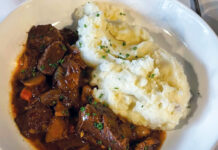
Most of us think of Thanksgiving as a long-abiding tradition. After all, the first record of this ritual was more than 400 years ago. It’s just something Americans always celebrate, right?
Not exactly. The history is complicated… at least for Southerners. In fact, during the antebellum period, many Southerners resisted the holiday outright, considering it an act of Northern aggression.
“In the 1840s, part of the resistance [to Thanksgiving] was that a lot of white Southerners thought that it was going to conflict with the other religious holiday, Christmas. But when you get to the 1850s, things get really tense between the North and the South, both in politics and society,” says Victoria E. Ott, Ph.D., James A. Wood Professor of American History at Birmingham-Southern College and author of “Confederate Daughters: Coming of Age during the Civil War.” “They thought that [Northerners] were infiltrating the South with their antislavery values, and so the resistance to Thanksgiving as a potential abolitionist conspiracy really becomes popularized by the mid 1850s.”
The suspicions weren’t completely unfounded either. Although the Pilgrims’ first harvest celebration was in 1621, it wasn’t until 1846, 225 years later, that New Hampshire native Sarah Josepha Hale started campaigning to have Thanksgiving declared a national holiday. Hale, a widow with five children, was a prolific author, the editor of Philadelphia’s “Godey’s Lady’s Book” and one of the founders of Vassar College. She was also an abolitionist who was devoted to the Union.
Further, according to Ott, it makes sense that if Southerners were “going to try to separate economically and, eventually, politically with secession, that they would want to separate culturally. So there was this move to really celebrate the uniqueness of Southern culture.”
And when it came right down to it, the New England-born holiday just wasn’t a part of Southern culture, even though residents of some states had sporadically acknowledged the Pilgrim feast.

In 1863, Hale’s persistent appeals for a “moral and social reunion of Americans’’ resulted in President Abraham Lincoln proclaiming a national Thanksgiving Day, and during Reconstruction, this proclamation extended to the Confederate states as each one returned to the Union. Finally, in 1870, President Ulysses S. Grant designated it a national holiday, although Southerners— not all fans of Lincoln or Grant— were still slow to embrace Thanksgiving. What is interesting and ironic, however, is that many traditional Thanksgiving dishes are firmly rooted in Southern foodways.
“In the South, we have always eaten locally and eaten in season, and Thanksgiving is no exception to that,” says Emily Blejwas, executive director of the Alabama Folklife Association and author of “The Story of Alabama in Fourteen Foods.” “When I think about Thanksgiving in the South, I think about turkey. Turkeys are native to the region and Native Americans relied heavily on them— not only on eating turkeys, but on their eggs, too.”
Then there’s corn. Whether it is incorporated into cornmeal for dressing or mashed for sipping whiskey, “It was the staple of life,” says Blejwas. Other holiday classics native to the South are pecans, rice and, of course, sweet potatoes.
“Southern food in general, as we know it, wouldn’t exist without the very instrumental hand of African American cooks, particularly women. And I think sweet potato pie especially reflects that,” Blejwas says. “[Sweet potatoes] were instrumental and central to the Southern diet, especially for enslaved people.”
In addition to Southern sweet potato casseroles and cornbread dressing, Bay residents also opted for local indigenous foods, such as oysters and pecan pie, which still share the dining table with Northern fare, such as mashed potatoes and cranberries. The Port City also has that historic French and Spanish Colonial worldview, points out Blejwas, and “it was always open to different cultural traditions.” That’s why the fourth Thursday of November, Blejwas says, “has become an American holiday about food and is another cultural tradition that we have taken into our great Mobile melting pot.”
Bo Ansley
Spatchcocked Smoked Turkey

“A spatchcocked bird has more surface area and so it cooks faster and more evenly. Remember there’s plenty of secondary uses for the giblets, like stock and gravy, but mine usually go in the crab traps (because we like to eat blue crabs, too).”
“When I was growing up in Georgia, Thanksgiving was packed with getting up early to go duck hunting with Dad, followed by an afternoon of watching football with my brothers-in-law and helping Mom in the kitchen with cleaning chores. Having five kids, my parents were accustomed to prepping big meals but “turkey day” was the biggest. Every year we got the largest bird to be found — anything smaller than an emu wouldn’t do. In addition, there was always a venison roast and tons of casseroles and veggies.
As the youngest child, I always had unanswered questions. Why did we have turkey only once a year? Why did we serve something that required epic labor to prepare and left us with copious leftovers that we weren’t looking forward to?
And then one day, I went to Texas. All those famous barbeque brisket joints carried smoked turkey breast on their menus. A turkey in beef country had to be good with no margin for error. I couldn’t imagine how white meat turkey could compete with the succulent texture of a smoked brisket until I tried Franklin’s in Austin. Simply seasoned and smoked to perfection, this is what would put turkey on the menu more frequently.
I’m older now and our Thanksgiving gatherings are smaller. Turkey is a part of Thanksgiving these days, but it’s never the 24-pounder that fed an army for weeks. It’s either a reasonably sized breast or a small bird (10 pounds or so) that’s spatchcocked to ease in preparation. What a smaller bird lacks in quantity, it more than makes up in quality and flavor, so you can look forward to smoky leftover Mexican dishes like enchiladas or white bean chili, or a nice light turkey salad with a sleeve of Ritz crackers … assuming you even have leftovers.”
The Bird is the Word
Much of our traditional Thanksgiving narrative may be a myth, and efforts are being made to help Americans better understand the complicated
relationship between early American settlers and native people. One thing is certain, however: turkey was served at that first meal with the Pilgrims and Indigenous Wampanoag in 1621, and it is the most common main at modern day Thanksgiving tables, too. A good roast chicken is a perfect substitute.

Spatchcocked Smoked Turkey
Recipe by Bo Ansley
Serves 8
8 — 12-pound whole turkey (a chicken works just as well)
1 quart of dill pickle juice, for brining
sea salt and black pepper to taste
2 tablespoons of olive oil
heavy-duty aluminum foil
lump oak coal
1. Remove turkey from packaging. Remove the giblets. Using poultry shears, spatchcock the bird by cutting down each side of the backbone and removing it. Turn the bird over so the breasts face up, and press down gently on the breasts to split
the bone and cause the bird
to lay flat.
2. Add turkey and pickle juice to a large ziplock bag and set it aside. Place on a tray (in case the bag gets a puncture) and refrigerate overnight.
3. Fire up your smoker until it maintains 275–300 degrees. Remove turkey from brine and set on baking sheet. Pat dry with paper towels. Rub olive oil on skin and sprinkle with sea salt and black pepper to taste. Ansley prefers a two to one
pepper to salt ratio.
4. Place a drip pan of water between the grill and fire. Place turkey skin side up on grill over indirect heat. After 90 minutes, the turkey should have an internal heat of about 160 degrees.
5. Remove the turkey from
the grill and completely wrap
in aluminum foil. Close the grill damper and and return bird to the smoker for 30
more minutes.
6. Remove from the grill and
let it rest 30 minutes. Serve with cranberry or Alabama white BBQ sauce.
Jane Faegin
Scalloped Oysters

“Scalloped oysters is a Feagin family tradition.
My husband Frank’s mother served it at Thanksgiving,
and her children and grandchildren loved it.”
“I remember convivial feasts at my grandmother Lollie Lamey’s home, surrounded with my Lamey and Brady cousins. There was always oven-baked turkey with the dressing inside the bird and in the pan. Delicious! After I married, and when my husband Frank’s mother was living, we journeyed to Memphis for festivities. Frank was a runner back then and would participate in the Thanksgiving Day run. Those who finished the 5-mile race in less than 35 minutes received pumpkin pies, but the family would always accuse Frank of going to Seesel’s market to purchase his pie! Nowadays, our children and grandchildren join us on Mobile Bay for Thanksgiving. We’ve switched to frying the turkey in a Big Easy, which really simplifies the process.”

Scalloped Oysters
Recipe by Jane Faegin
Serves 10
1 stick butter
4 1/2 cups crushed saltine crackers
1 quart oysters
1/8 teaspoon salt
1/8 teaspoon pepper
1 tablespoon chopped fresh parsley
1 1/4 cups half and half
Paprika
1. Preheat oven to 350 degrees. Melt butter in a large saute pan and add cracker crumbs. Cook, stirring occasionally, until browned.
Remove from heat and set aside.
2. Drain oysters, reserving 1/2 cup liquid.
3. Lightly grease a 12 x 8-inch baking dish.
Sprinkle half the toasted cracker crumbs. Top with oysters, then add salt, pepper and parsley. Cover with remaining cracker crumbs.
4. Combine half and half
and reserved oyster liquid. Pour over cracker crumbs. Sprinkle with paprika.
Bake for 35-40 minutes.
Oyster Holiday
Oysters might have been brought to the first Thanksgiving by Native peoples, but it has a place on Southern tables for good reason. Gulf of Mexico bivalves reach peak season with cooler weather (and water).
Catherine Cleverdon Vulevich
Doll’s Heavenly Oyster Dressing

“My grandmother Doris Hart Sullivan, or “Doll” as we all called her, passed away in 2011, and making her oyster dressing on Thanksgiving reminds me of her. While it cooks in the oven, the smell is heavenly!”
“Growing up we always watched the Macy’s Thanksgiving Day Parade, and in 1987 my parents took us to New York to see it in person. I’ll never forget seeing the cast from Rags to Riches, the Rockettes and Patrick Swayze! Today my sisters and our families alternate years, so we all spend the entire day with my parents and cousins on the Bay in Point Clear one year. And the next year, we spend Thanksgiving with the Vuleviches in Bellefountaine. We are a seafood- loving family, and my husband John spent a lot of time with Doll and her sister, June Bug, and their seafood recipes. He recommends getting freshly shucked oysters from the local oyster shops, and if possible, ‘off the run.’”
Doll’s Heavenly Oyster Dressing
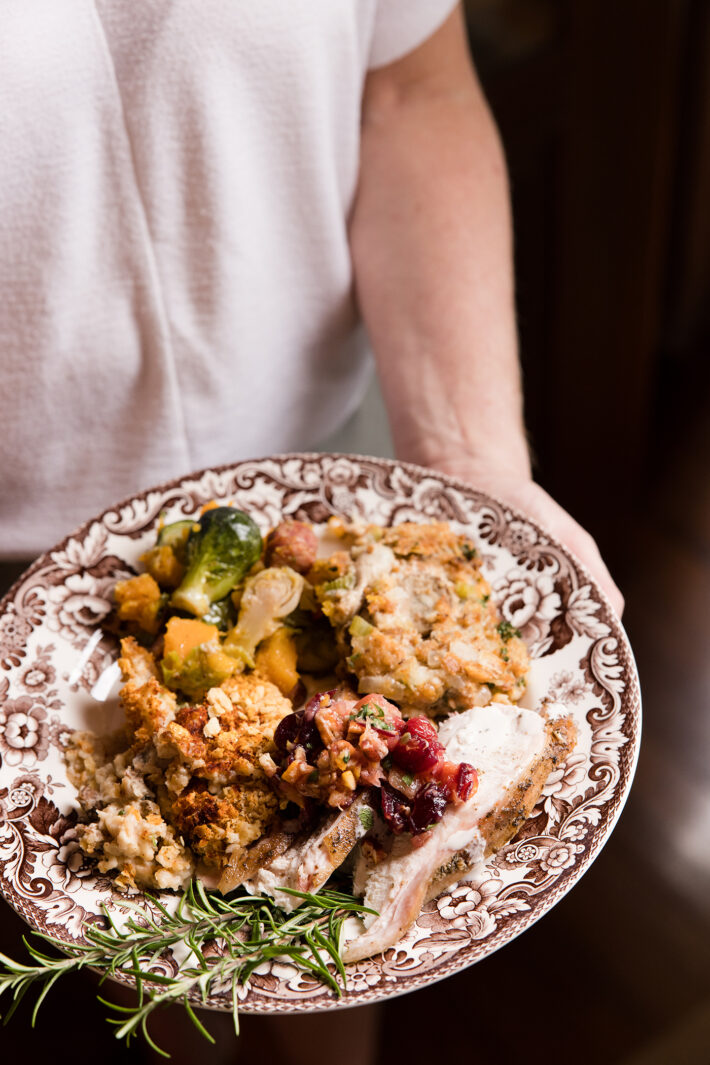
Recipe by Catherine Vulevich
Serves 10
1 1/2 loaves sliced white bread
1 stick butter
1 large onion
2 stalks celery
1/2 cup chopped parsley
4 cups chicken broth, divided
1 pint oysters, drained, liquor reserved
salt and pepper to taste
1. Preheat oven to 350 degrees. Add pieces of bread to oven and toast until golden brown. Remove from oven and cool completely. Then tear into small pieces and place in an extra-large mixing bowl. Set aside.
2. Melt the butter in a large sauté pan. Add onion and celery and cook until soft. Add cooked vegetables and parsley to the torn bread. Pour half the chicken broth over bread and stir to combine. Add remaining chicken broth and 2 tablespoons of reserved oyster liquor, salt and pepper and stir until well mixed. Gently fold in oysters.
3. Grease a large oven-safe dish and add dressing. Bake 35-45 minutes, or until golden brown.
Jessi Gadomski
Autumn Vegetables

“As a mother of five kids, I’m always trying to create vegetable recipes that the kids love. They are obsessed with Brussels sprouts, so I try to serve them often. Sometimes I switch out the butternut squash with sweet potatoes or pumpkin.”
“My father usually cooked a huge Thanksgiving meal for our family of four and a few friends. He always made sure to have lots of leftovers so we could enjoy the feast throughout the weekend. These days, we have three big Thanksgiving meals as we visit all the relatives. No matter where we eat, we’re sure to find lots of pies: pumpkin, pecan, Dutch apple, and sometimes a pumpkin cheesecake, too. I was born on Thanksgiving, so I love to celebrate!”
Autumn Vegetables
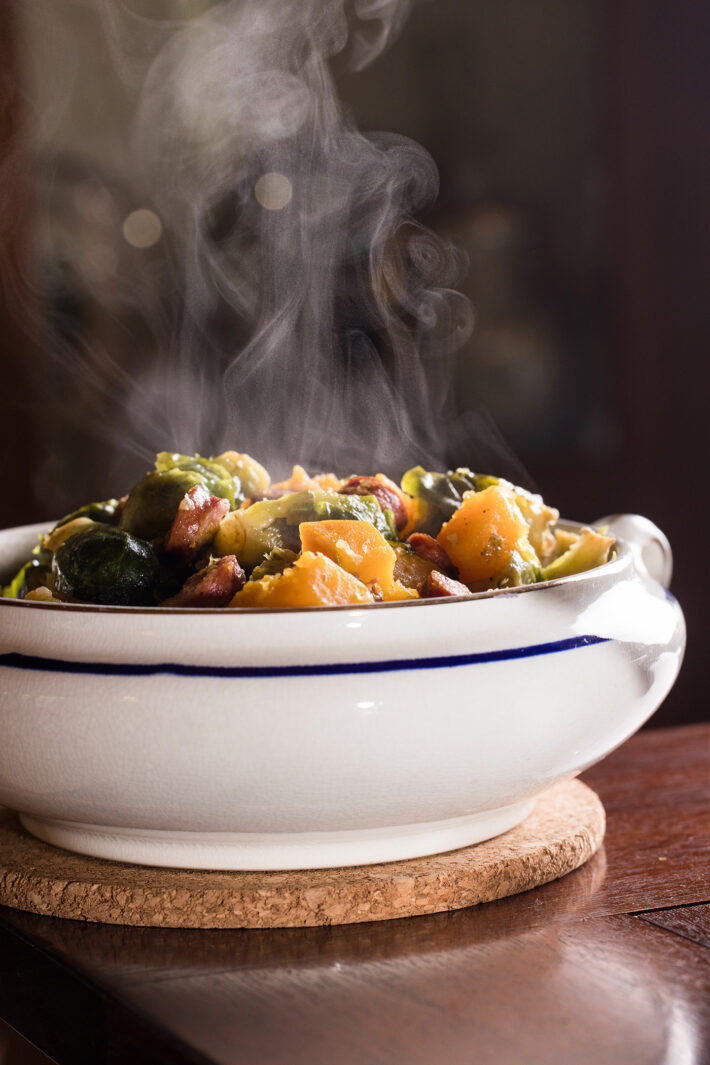
Recipe by Jessi Gadomski
Serves 6-8
1 tablespoon olive oil
2 links Conecuh sausage, cut into ¼” thick rounds (about 1 cup)*
1/2 teaspoon salt
2 pounds brussels sprouts, trimmed and halved vertically (about 7 cups)
1/2 cups water
1 medium butternut squash, peeled and cut into ½ in cubes (about 7 cups)
1 teaspoon Montreal steak seasoning
1. Heat olive oil in a large stockpot. Add sausage and saute until brown. Add the brussels sprouts, salt and
water. Cover and let steam for 5 minutes.
2. Add the butternut squash, another 1/2 cup water and Montreal steak seasoning. Cover and steam for 15
minutes, stirring occasionally to prevent burning.
* You can omit the sausage, but replace it with an additional 1 tablespoon of olive oil.
Carolyn Lee Goodloe
Cranberry Relish

“I like this cranberry relish recipe because it is
so different from the store-bought jelly. It is fresh and
light and adds a new twist to our traditional meal.”
“My parents’ home in Tuscaloosa was the family gathering spot on football weekends and holidays. On Thanksgiving, our house was full of aunts, uncles, lots of cousins and plenty of good food. These days my children and their families gather at our home in Point Clear. Our meal looks a lot like the ones from my Tuscaloosa days, except for the turkey. We like to experiment. We have tried fried, smoked and last year we ordered one from Popeyes. It was very good!”
A Taste of the North
It is thought that the native Narragansett people introduced cranberries to colonists in Massachusetts as early as the 1500s, and the berries continue to grow well in New England and Canada. Despite geographic limitations, the sweet, tart fruit has become a staple on every American Thanksgiving table.

Cranberry Relish
Recipe by Carolyn Lee Goodloe
Makes 4 cups
1 bag fresh cranberries
1 medium naval orange, quartered
1 bunch cilantro, chopped
1 jalapeno, seeded and chopped
1 8-ounce can crushed pineapple, drained
1 cup sugar
1/2 lime, juiced
1 cup chopped, pecans
1/4 cup chopped mint leaves
1. Add cranberries and orange (including the peel) to a food processor and pulse until ground. Transfer to a mixing bowl and add cilantro, jalapeno and pineapple. Stir in the sugar. Add the lime juice and refrigerate for several hours.
2. Meanwhile, spread pecans out on a baking sheet and toast in a 350 degree oven for 7 minutes or until golden brown. Remove from oven and let cool completely.
3. Before serving relish, fold in the toasted pecans and mint.
Jennifer Merritt
Pumpkin Delight
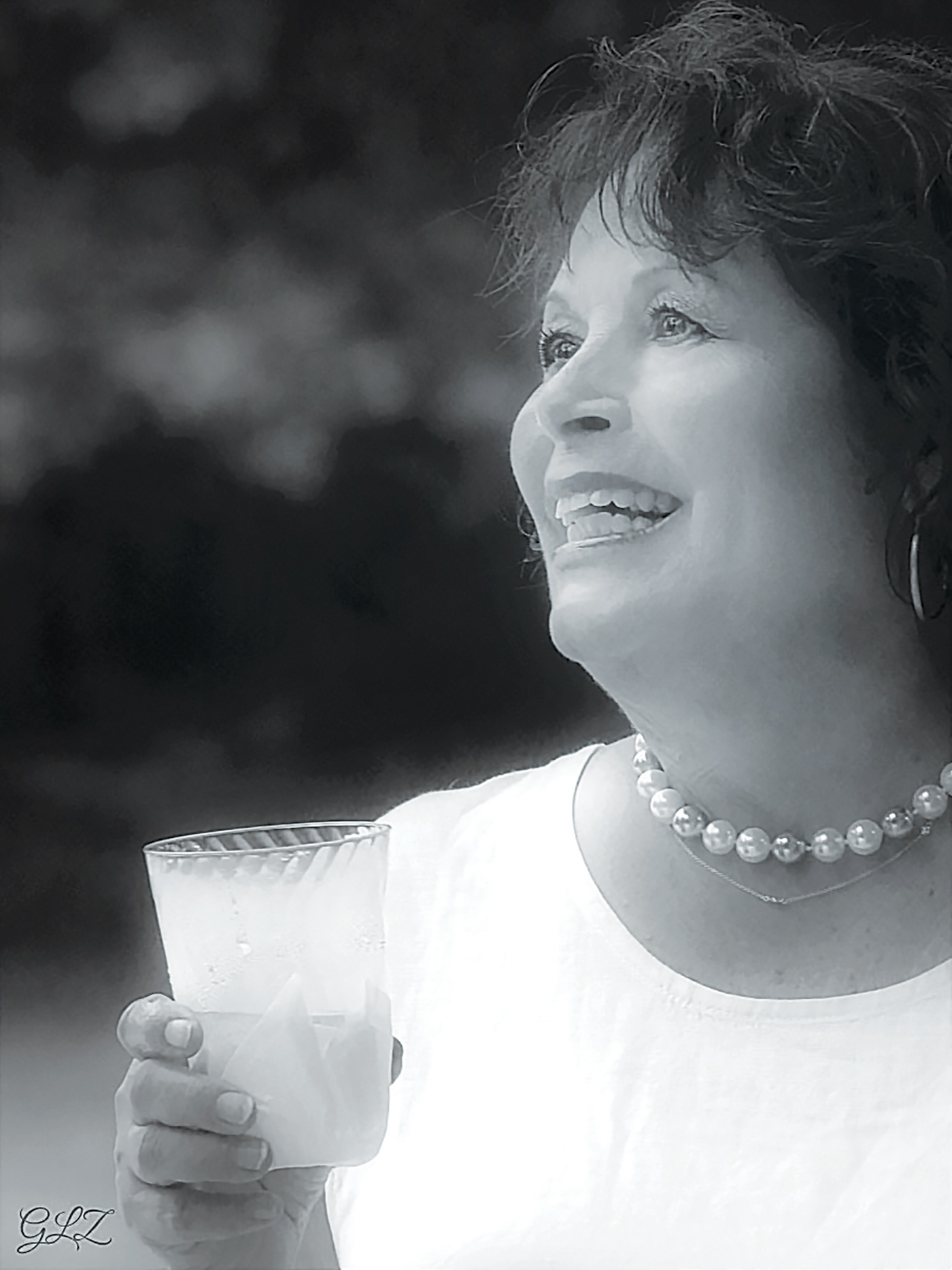
“My dear friend Cindy Thompson shared this recipe with me 10 years ago and I’ve been making it ever since. It’s a great Thanksgiving dessert that everyone loves, and we usually enjoy leftovers for several days.”
“My earliest memories of Thanksgiving revolve around coming across the Bay from Mobile to my Mother’s family in Magnolia Springs. She was the only sister to seven brothers, and she was expected to be there. So, I was always excited to get to play with all the cousins for the whole weekend on the farm. There was always lots of food and activities. Our Thanksgivings today are always at the hunting camp in Tensaw with all the family and whoever else needs a place to celebrate. My favorite part is Wednesday night when everyone starts to arrive. We always have something seafood to eat and everyone’s favorite is the large pot of oyster stew. It’s an unconventional recipe from my father-in-law that is served with shredded lettuce on top. Our Thanksgivings seem to be getting larger every year and I love it with all the food, family and fun!”
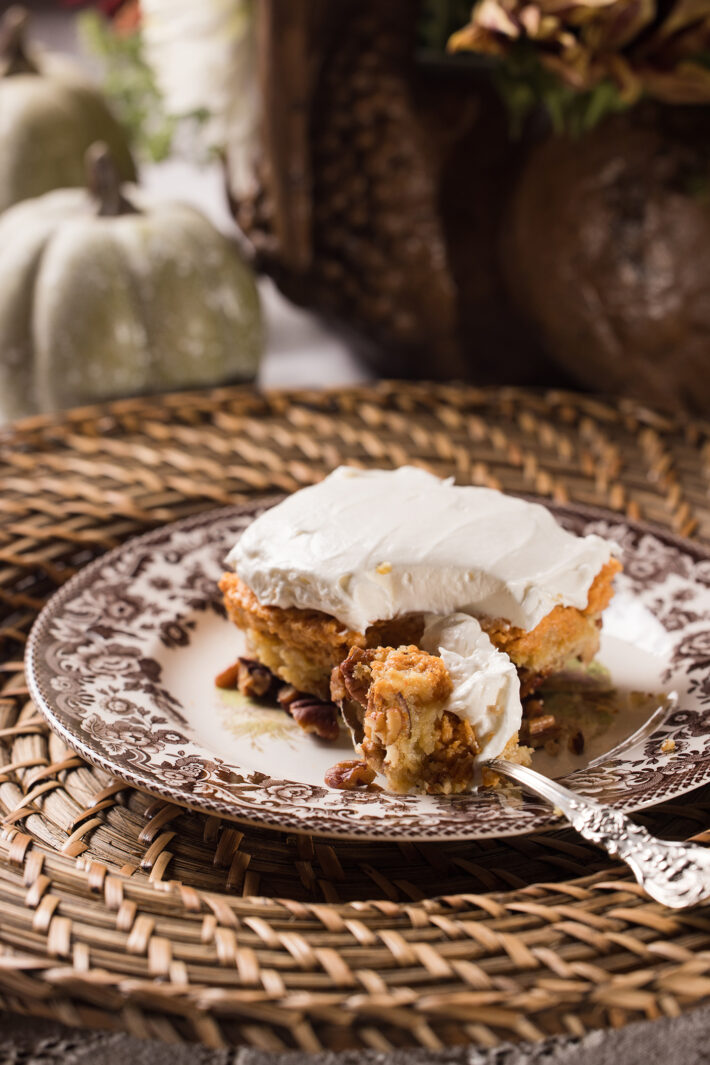
Pumpkin Delight
Recipe by Jennifer Merritt
Serves 10
3 eggs
1 15-ounce can pumpkin puree
1 12-ounce can evaporated milk
1 cup sugar
1/2 teaspoon cinnamon
1 box yellow cake mix
1 1/2 cups chopped pecans
1 1/2 sticks butter, melted
1 8-ounce cream cheese, softened
1/2 box confectioners sugar
1 12-ounce Cool Whip
1. Preheat oven to 350 degrees. Spray a 9 x 13-inch glass baking dish with cooking spray and line the inside with parchment paper.
2. Beat eggs, then stir in pumpkin, milk, sugar and cinnamon.
Pour into prepared baking dish and sprinkle cake mix over the mixture. Top with pecans and melted butter.
3. Bake for 50–60 minutes,
being careful not to let the pecans burn. Bring to room temperature and then cool completely in refrigerator before continuing.
4. In the bowl of a stand mixer, beat cream cheese and confectioner’s sugar until well combined. Stir in Cool Whip. Invert pumpkin dessert onto a serving platter and frost the top of the pumpkin layer. Return to fridge until ready to serve. Slice into squares.
Don’t Forget To Zap The Pinecones
Text by Leslie Anne Tarabella

Consider this a gentle reminder for all who may be A) forgetful or B) new to the area. It’s the essential step Southern hostesses remember without fail. If skipped, your decorating skills may be in danger of being . . . discussed.
The Great Depression left the rural South with the motto, “make the most of what you have.” It works for home décor as well as beauty pageants.
Granny thought to bring the “outdoors – in” long before HGTV. The pine boughs and waxy magnolia leaves were all the decorations she had to drape across the mantel, and the deep woodsy scent was imprinted on the brains of future generations.
That’s why, today, we’re programmed to keep a pair of pruning shears in the car for sudden stops to snip a little holly from our neighbor’s yard (she won’t mind) or clip a few branches from the old cedar in the cemetery.
But here’s the essential tip: Don’t forget to debug your natural decor before arranging it on the dining room table. After skipping home with a trunk full of pinecones from Mona Rae’s yard (she’ll thank you), remember to give your bounty a zap in the microwave or, like granny used to do, toast it a bit in the oven before arranging them on the dining room table.
Constance Pepperwaite, of the Spring Hill Pepperwaites, learned this the hard way. In the middle of her Thanksgiving dinner, a lovely vase of fat acorns sitting atop a silver tray suddenly hatched tiny white worms that shimmied themselves into a frenzy. She was forced her to grab the vase and run screaming as she tossed it off the porch.
Dinner and a show, indeed.
Those who decorate with natural elements fall into two camps: those who leave them as God intended and those who give The Creator a helping hand by enhancing them with five coats of metallic spray paint. You haven’t seen true beauty until you’ve seen Mavis Leigh’s silvery pinecone topiary. Absolute heaven on earth.
Happy decorating, y’all.
Leslie Anne Tarabella is the author of three books. She loves made-from-scratch hushpuppies and lives in Fairhope with her husband, Bob, where they raised two sons.

